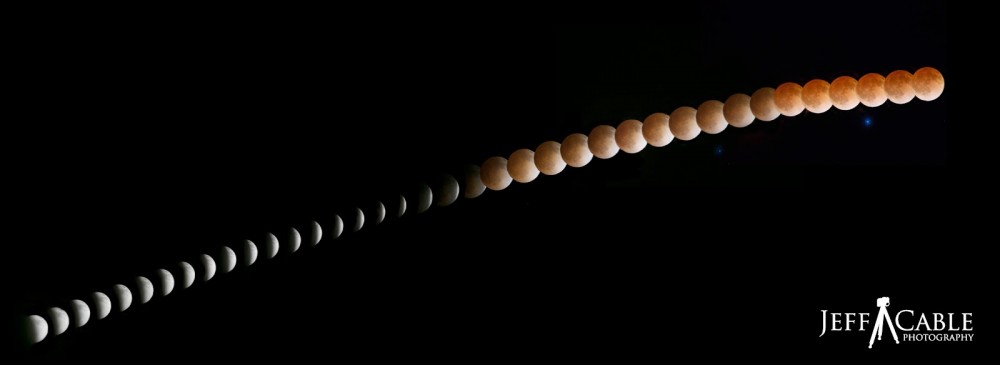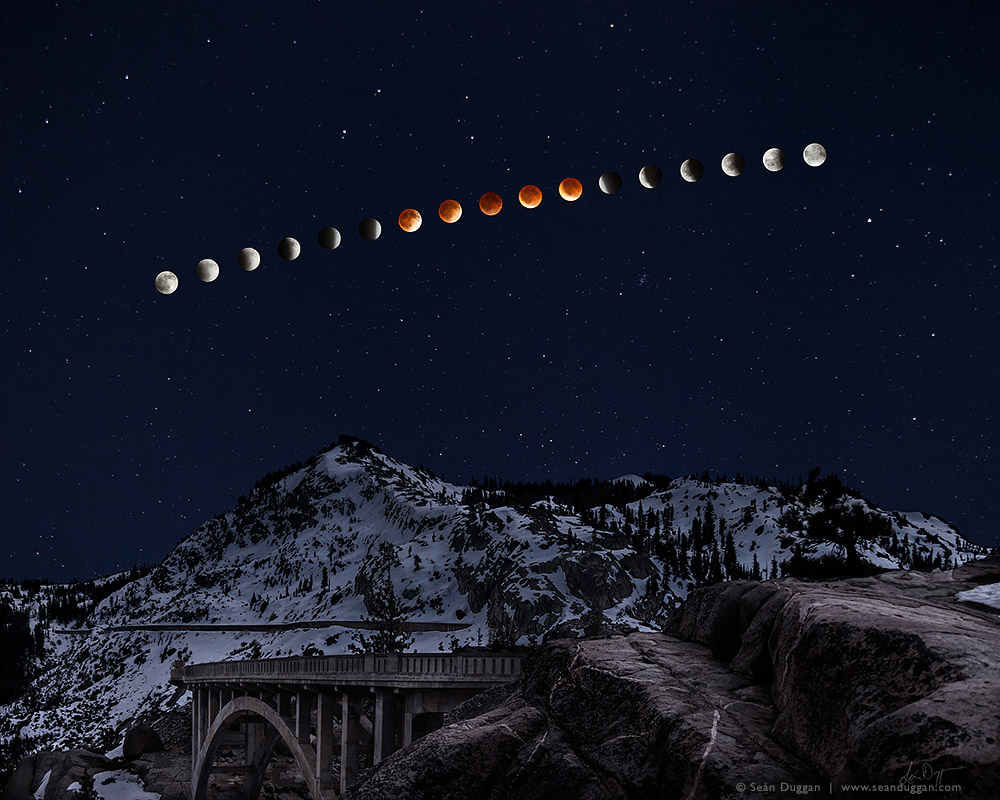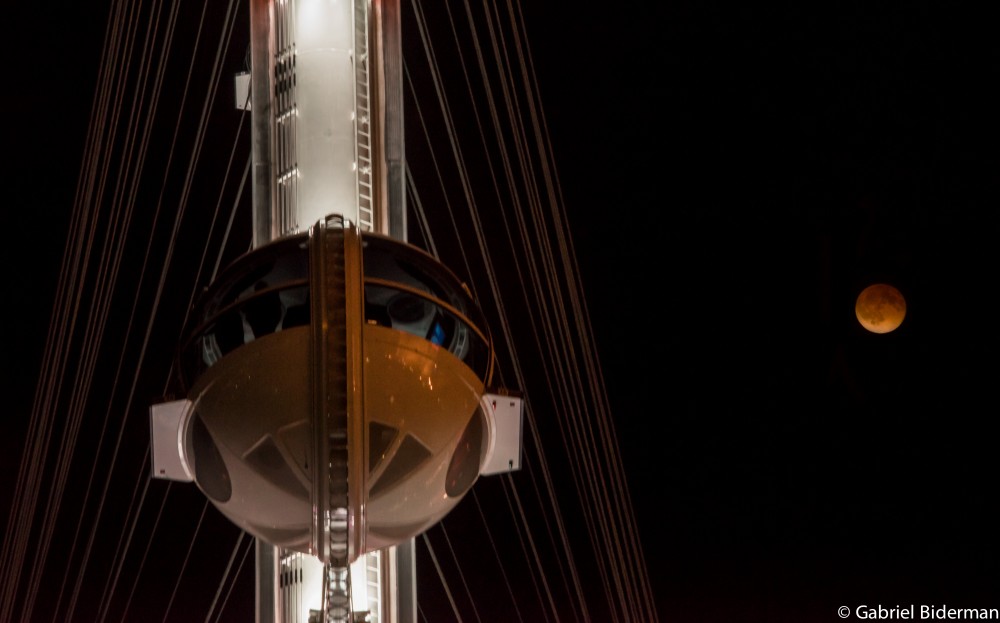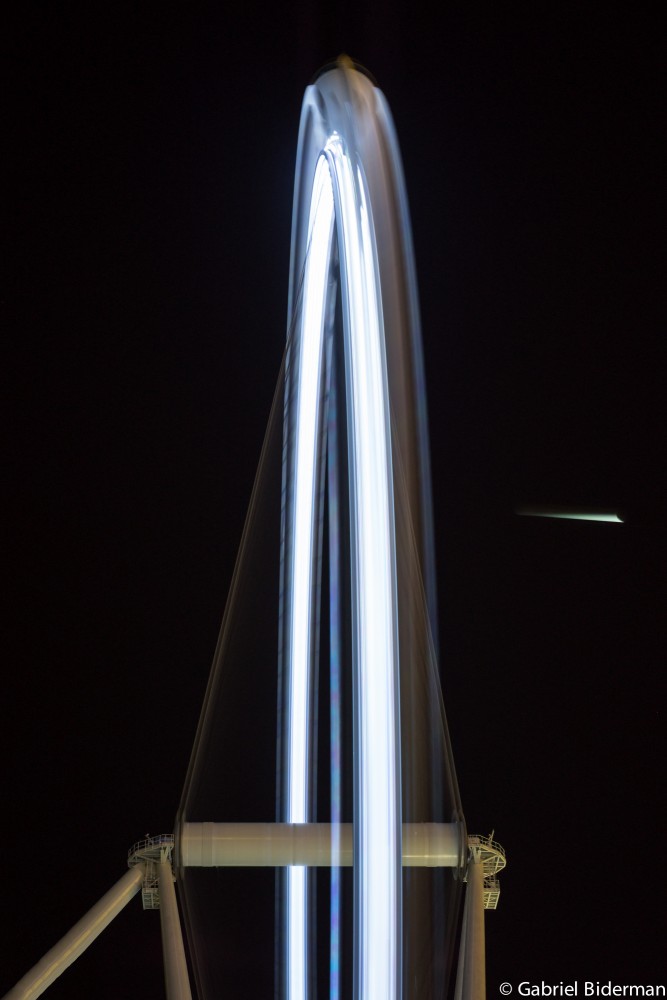Were you able to see the total lunar eclipse on April 14th-15th? I was fortunate enough to be out in Vegas teaching the Dusk to Dawn Workshop, and we were able get some pretty spectacular images as well as witness the whole 3+ hour event. As I was doing my research in preparation for shooting the moon, I came across this wonderful description as to why the moon appears red during the eclipse. Imagine yourself witnessing the eclipse from the moon – during the darkest time of the eclipse, when the earth is totally in front of the sun – you would still see a ring of fire – the sun around the earth. What you’d be witnessing is all of earth’s sunrises and sunsets. And it is that red and orange light skimming along the edge of the earth’s atmosphere that is reflecting off the moon. Pretty cool, right?
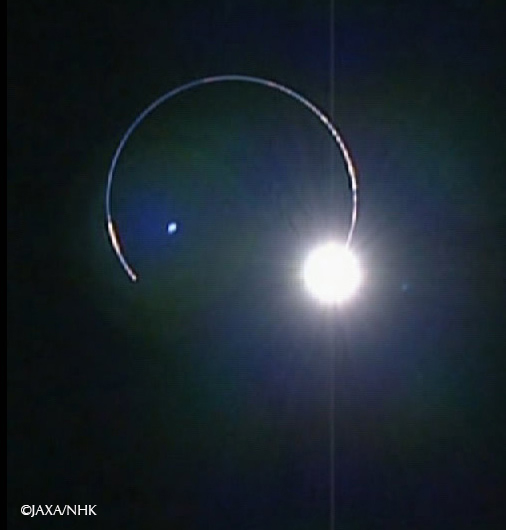
Here is one of the few images that we have of the earth eclipsing the sun – from the moon’s point of view. Taken on February 10th 2009 by the Japan’s Lunar Explorer “Kaguya (Selene)”. The “circle of sunlight” is “a ring of a thousand simultaneous sunrises and sunsets”
This “Blood Moon” as it was originally dubbed by Christian pastors John Hagee and Mark Blitz, prophesized that this was the beginning of the end of the world. I think just the opposite. It seems to have renewed an interest in astronomy and an excitement of planning where you will be during the next Blood Moon. You see, this is the first of four, or a tetrad, that will occur over the next 1 ½ years.
Shooting the eclipse can be a tricky thing, so here are a few ideas to consider before capture.
Lens selection: When shooting the moon you need a fairly long lens, at least a 300mm or preferably a 500-600mm on a full frame camera, especially if you want to get a nice big moon with lots of detail.
Composited Multi Moons:
This seems to be the rage with eclipses now and it is fairly easy to do with digital. You need patience and time for this one, as you have to commit one camera to shooting the moon as it changes over 1-3 hours. You’ll have to pay close attention, as the exposures will vary dramatically as the bright white changes to the darker rust red moon. Afterwards, you’ll pick the best moons and layer them onto one image. One of my favorites was done by my good friend Jeff Cable and he goes into great description on how he composited it together here.
Foreground considerations:
Another cool way to capture the multi-moon eclipse is by including the foreground. This requires a little bit more photoshop skills as you will need to shoot the foreground separately and realistically as the base layer and then add the moons later. My favorite shot of the eclipse with an interesting foreground was by Sean Duggan – check out his blog for more details on his amazing image.
We were finishing up our light painting shoot at the Neon Boneyard when the eclipse started. It would have been cool to capture the entire eclipse there but unfortunately they didn’t want to stay open late for us until 1:30am! We had the option to either head out to Red Rock and get a darker sky with the moon over mountains, but I thought it would be more interesting to play the moon against the newest star of Las Vegas – the High Roller Ferris Wheel.
This provided a challenging and space age foreground for us to combine with the moon. My image was shot with the Sony A7r and a Metabones adapter with a Nikon 70-200 and 1.4 teleconverter. This gave me an equivalent focal length of 300mm and it’s a composite of two images – one exposed for the moon at 4 seconds at f/4 and the other freezing the lunar pod at 1/15 second.
As most of you know, I also love to play with time, and a little later I wondered what it would look like to capture a 15-minute evolution of the moon and revolution of the wheel.
I hope these images have inspired you to get ready for the next few lunar eclipses! The upcoming dates are October 8th, April 4th, and then September 28th.
Rumor has it I’ll be in Iceland for the last one…
– Carpe Noctem!
